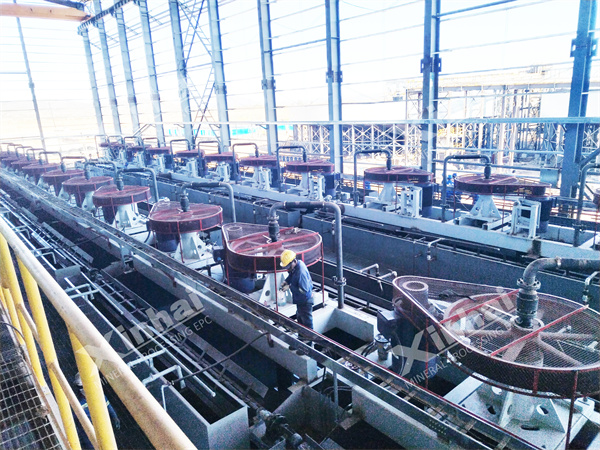If you want to know more information (such as product/process price, etc.), please contact us 24-hour telephone
As new energy batteries and high-end sealing materials rapidly develop, the value of flake graphite as a strategic resource becomes increasingly prominent. However, traditional mining processes are severely limited by a high damage rate of up to 30% for large flakes, which restricts resource value. This article focuses on the core demand for "protective separation," systematically analyzing comprehensive optimization schemes from grinding to flotation to help enterprises achieve process upgrades that increase fixed carbon content in concentrates by 5-8% and improve the retention rate of large flakes by 40%.
1.Equipment Innovation: Vertical Spiral Stirring Mill Technology
Principle: Uses shear force-based grinding instead of traditional ball mill impact crushing, effectively reducing interlayer delamination stress in graphite. A case study shows that applying this technology increased the retention rate of +80 mesh flakes from 52% to 78%, while reducing equipment energy consumption by 35%.
2.Multi-Level Grinding Parameter Control System
Three-Stage Control Model:
First Stage Grinding: Controls grinding concentration at 65-70%, product fineness ≤45% at -0.15mm.
Second Stage Grinding: Introduces hydrocyclone classification, circulating load control at 80-120%.
Third Stage Grinding: Uses tower mills for ultra-fine grinding, optimizing power density to 3.5-4.5 kW/m³.

1.Innovative Reagent System
Development: A composite collector system (emulsified coal oil + modified diesel + surfactant) increases the recovery rate of +100 mesh flakes to 91.2%. Comparative experiments show that the new reagent combination stabilizes the fixed carbon content of concentrates in the range of 94-96%.
2.Flotation Column Intelligent Control System
Integration: Combines online particle size analyzers (MLA system) with adaptive foam control systems to adjust aeration and wash water quantities in real-time. Industrial trials indicate that this system enhances flotation efficiency by 18% and reduces reagent consumption by 22%.
1.Flowchart of Classified Grinding and Flotation Process
Process Flow: Raw material → coarse grinding (rod mill) → classification (high-frequency fine screen) → coarse particle re-grinding (protective re-grinding with vertical mill) → fine particle flotation (flotation column) → ultrasonic enhanced dewatering (moisture content ≤12%).
2.Key Technological Innovation Points:
High-Frequency Vibrating Screen Pre-Classification: Uses 0.3mm sieve holes for early coarse particle separation.
Ultrasonic Assisted Flotation: A 20kHz ultrasonic field increases reagent dispersion by 40%.
Online XRT Intelligent Sorting: Pre-dry waste disposal reduces grinding input by 15-20%.
1.Intelligent Grinding and Flotation System Architecture
Integrated System: Combines PLC control systems, online particle size detection modules (PSD analyzers), and automatic dosing devices to achieve:
Grinding concentration fluctuation ≤±1.5%.
Flotation pH control precision ±0.2.
Reagent addition error <3%.
2.Application of New Flotation Equipment
Configuration Scheme: Flotation column + mechanical flotation machine combination.
Roughing Stage: 3m diameter flotation column handles 120m³/h.
Cleaning Stage: KYF-8 flotation machine with automatic liquid level control system.
Scavenging Stage: CLF coarse particle flotation machine recovers +0.3mm material.
Data from a 50,000-ton graphite concentrate project shows:
Large Flake (+80 mesh) Yield: Increased from 32% to 57%.
Energy Consumption per Ton of Concentrate: Reduced from 85 kWh to 62 kWh.
Reagent Cost: Decreased by 18 yuan per ton.
Investment Payback Period: Less than 14 months.
Through innovations in grinding methods, precise control of flotation processes, and integration of intelligent equipment, modern graphite mining has achieved dual enhancements in protective separation and economic benefits. As a provider of EPCM+O solutions with 20 years of experience, we continue to develop technologies such as online particle size control systems and green flotation reagent packages, driving the industry towards a target of 98% large flake retention. Please visit our technology center for customized mining solutions.